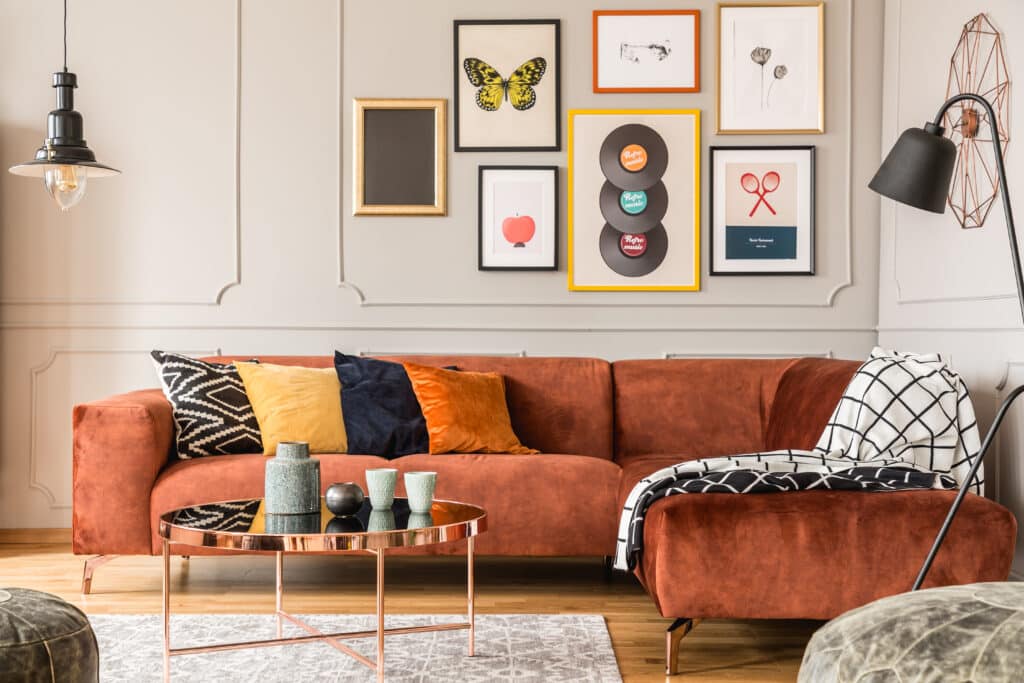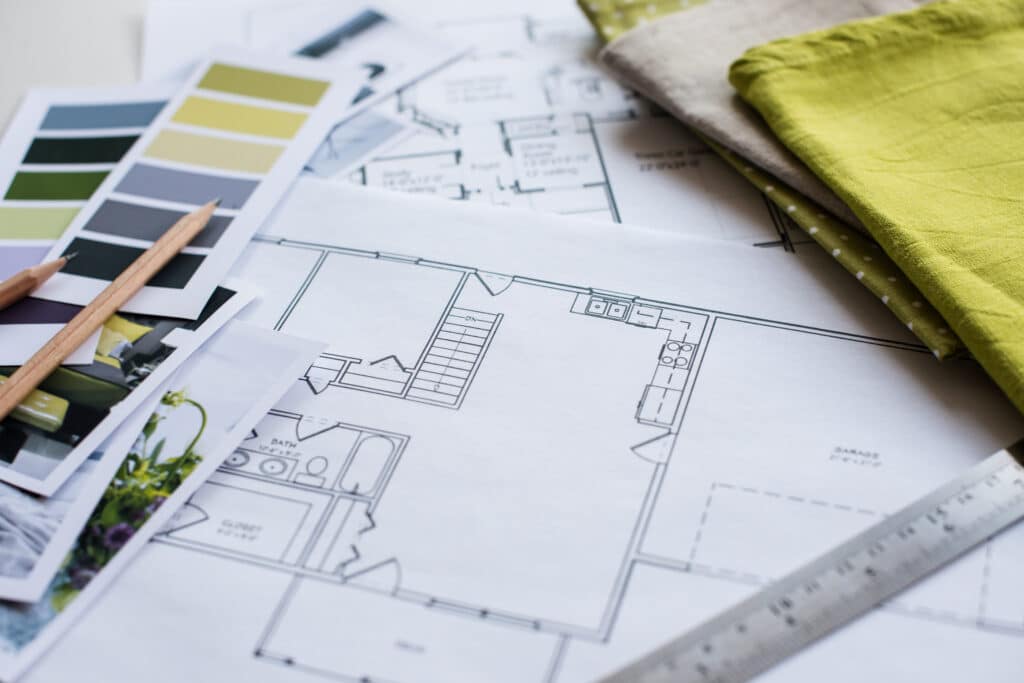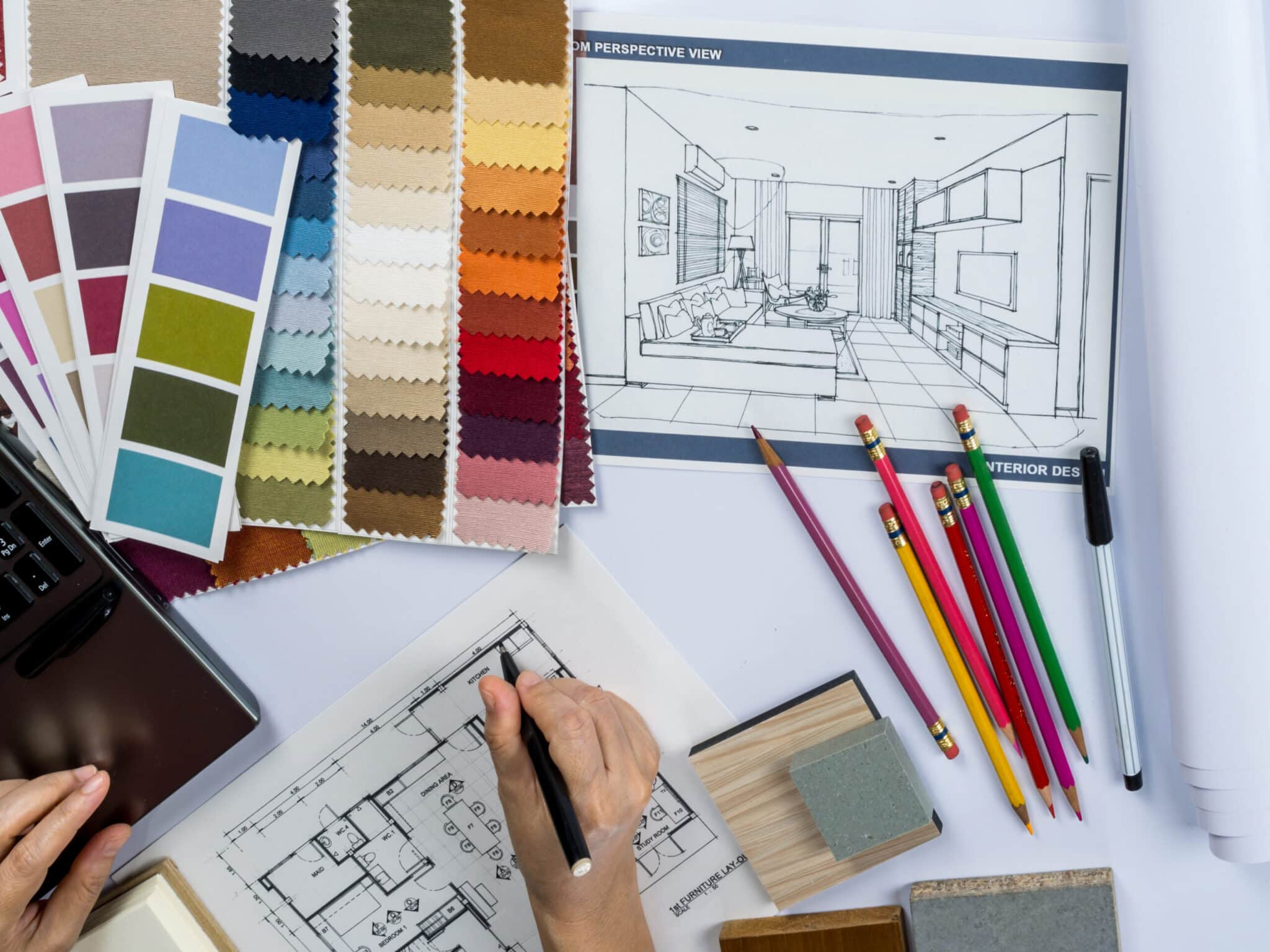If you love indulging your creativity to decorate rooms in your own home, why not build a business of it?
As a business consultant, I’ve helped many interior designers grow their brands during all stages of the business-building process: from startup to success.
As such, I’ve familiarized myself to an expert degree with the process of building an interior design business.
And now I’m here to help you! Here’s a comprehensive guide to starting your own interior design business.
Pick a Niche

The first step to creating a successful interior design company is to decide on a niche you’ll focus on.
What creative style are you most naturally geared towards? What do you want to accomplish with your vision?
Do you prefer working with modern, traditional, or eclectic styles?
Where do these styles work best? What kind of spaces do you enjoy working with?
How about small spaces, large homes, or maybe high-end clients?
Finally, what sets you apart from other interior designers interested in these details?
By defining exactly who your target audience will be and what kinds of services they need, you’ll be able to focus your efforts and create a unique, unforgettable service offering.
Determine Your Service Offering
It’s necessary to determine what services you’ll be offering early on so that you can be transparent with your potential clients.
Do you want to offer complete design services, from space planning to accessories to finishing? Hardware and appliances as well?
Or, are you offering purely decorative and ambiance-focused services?
Do you want to offer your services a la carte or by package?
It’s difficult to start advertising if your offerings aren’t clear, so it’s better to get this figured out quickly.
Research the Competition
Competition research can be an essential part of designing the rest of your business.
Remember — you want to stand out. As such, when you’re examining other businesses, ask yourself what you could be doing differently and better.
Your market analysis should primarily recognize the other interior design firms that compete with yours.
However, it doesn’t hurt to think big and research large-scale competitors. If you want to grow your business, check out the top interior designers in your niche so you have an understanding of your future competition, as well.
Consider that indirect competitors can also include DIY solutions. While not as immediate a threat, these need to be addressed too.
These threats can take the form of products offered by companies that don’t specialize in interior designing; thus it’s essential to demonstrate that you understand these alternatives exist for customers looking to spruce up their interiors.
Choose a Business Name
Coming up with a business name is a symbol of coming up with an entire brand.
Your name should be memorable and catchy, while also comprehensively representing your niche and work.
While you’re in the brainstorming phase, don’t limit yourself. Write down every business idea that comes to mind — you never know how ideas may transform.
Avoid an overly-complicated or lengthy name with difficult-to-pronounce words — clients will simply dismiss businesses that are difficult to remember.
Establish an LLC

Once you’ve figured out your business name and service offerings, it’s time to establish a Limited Liability Company (LLC).
An LLC will protect your assets from the liabilities of the company. It also shows clients that you are serious about running an organized and legitimate business.
Each state has its formation requirements, so make sure you research and fulfill those requirements.
You’ll need to file the necessary paperwork, get an EIN from the IRS, register with your state, and pay the associated fees.
Being aware of all regulations in terms of taxation and business licenses is also important so that you can avoid any legal trouble down the line.
Get a Bank Account & Credit Card
As a savvy business owner, you need to start a separate bank account and credit card to manage your finances.
Don’t mix personal and business finances — things can get far too messy far too fast.
Make sure you research the different banking options available to you, as there are many differences in terms and fees.
Look into any special discounts or offers that may benefit your interior design business; some banks even offer special services for start-ups.
For example, American Express offers a Business Platinum Card that comes with points in key business categories.
Once you’ve opened a business account, make sure you use the same name for all future transactions and filings. This will help maintain organization and clarity in your accounting records.
Finally, always stay on top of due dates and sign-up bonuses! Managing your credit wisely is key to long-term success.
Design an (Inexpensive) Logo
Now for the fun part — designing your logo.
Your logo is a representation of your business, so you want it to be as professional and inviting as possible.
Creating a logo from scratch may not be in your budget at first, but fortunately, several online resources offer inexpensive options. Look into websites such as Fiverr or Designhill to find affordable services.
Also, consider using tools like Adobe Photoshop and Illustrator; they have great features to help you create a simple yet professional-looking logo.
Once you’ve designed your logo, make sure you register the copyright so nobody can use it without your permission.
Remember: you can always change your logo for a more advanced and customized one as your business grows.
Launch a Website
Think of your website as a digital representation of the taste and style you’ll bring to interior design!
To accomplish this, you’ll need to look for a website builder that offers advanced customizability. That way, you can create a website that stands out to your clients.
Luckily, there are a host of website builders that offer just that — without any programming knowledge necessary.
Squarespace and Wix are excellent site builder options. Alternatively, you could go with a website builder specifically created for interior designers, such as Archifolio.
You’ll also need to find an affordable web host to get your site up and running.
Constructing your website correctly and completely will take some time. Haste makes waste, so resist the urge to promote an unfinished product.
After all, you want people’s first impression of you as a designer to be grand.
Start Marketing on Social & Build an Email List
Now it’s time to take your marketing efforts one step further.
Social media platforms such as Instagram, Facebook, and Twitter can be great tools to promote your business and build a client base.
To start, create a page or account on each of these channels to promote your business — and just your business.
If you run a personal account, you can promote your business page in your biography — just don’t mix the two too much in your feed.
You’ll want to create attractive posts that showcase the services you offer, feature projects in progress and completed designs, and even share helpful tips.
I highly recommend using 3D visualisations to promote your keen design eye. The 9 software in that list can help you virtually design rooms and show your clients what you’re capable of via Instagram and Facebook posts.
Don’t forget to build an email list, too.
Collect emails from clients and potential customers for exclusive updates, special offers, and inspiring content. Tools like MailChimp can help with this.
You may want to consider giving discounts or incentives in exchange for signing up — something extra to get people interested.
Wow Your First Clients and Get Reviews

It’s finally time to meet your first few clients! How exciting.
Make sure you communicate clearly and often with each client to ensure the project stays on track. This also shows that you truly care about their desires — making your clients feel cared for is a key part of establishing trust and loyalty.
Even if minor changes occur, keeping everyone in the loop is key. Be sure to take before-and-after photos of the projects, too.
Your clients’ feedback is invaluable and can help you get more clients. Ask each customer to leave a review or testimonial on your website, social media, or even Google so that potential customers can see firsthand how satisfied they are with your services.
This will be sure to make the right impression and bring in new business.
Choose a Strong Hourly Rate
Now that you have the word out there, it’s time to set an hourly rate.
Before deciding on an amount, do some research on what other professionals in your area are charging for their services — this will help you evaluate if your pricing is too high or low compared to others.
It’s important to remember to factor in the cost of materials, resources, and time spent on each project.
Take into account your experience and knowledge as well. How many years have you been designing? How much business experience do you have? How unique is your portfolio compared to others?
Answering these questions can help you determine a solid rate that will leave you with a profit.
Note: this rate should be flexible, especially in the early days of your business.
You may find that certain projects require additional time and effort, while others can be completed in a shorter amount of time. If this is the case, your hourly rate should reflect the extra work put into a particular project.
By taking all of this into account, you can make sure your rate is fair to both you and your clients.
Always be Networking
Networking is essential in any business, and interior design is no exception.
With strong business acumen, networking should be a breeze.
Stay active on social media to attract new clients and post about projects you’re working on. Interact with industry peers online and join trade associations or organizations related to your field. Collaborate with local businesses that could benefit from your expertise.
You should also attend public events in the interior design field, such as art exhibitions and furniture expos.
By actively networking, you can build meaningful relationships with potential clients, contractors, realtors, and suppliers, who can then recommend your services and expand your reach.
Conclusion
Starting an interior design business is a great way to turn your passion for home decor into a successful career.
Though it’s certainly no easy feat, following the steps outlined in this article can get you well on your way. From setting up an online presence to advertising and even hiring employees, this guide has got you covered.
So, don’t be afraid to take the plunge and embrace your inner interior designer.
How you decorate your future is up to you!

Frequently Asked Questions
The key step in starting an interior design company is finding a niche.
Research, research, research! Look into the skills and discipline required for interior design. One of the best ways to gain background is by working for an expert or as a contractor.
This depends almost entirely on your background and services, but most interior designers charge about $32 per hour.
Some of them certainly are! The average yearly pay for an interior designer nationwide is $67,481.
With the right amount of dedication, research, and determination, it’s entirely possible to become an interior designer without formal education. I recommend working as an apprentice to learn more about the industry.


